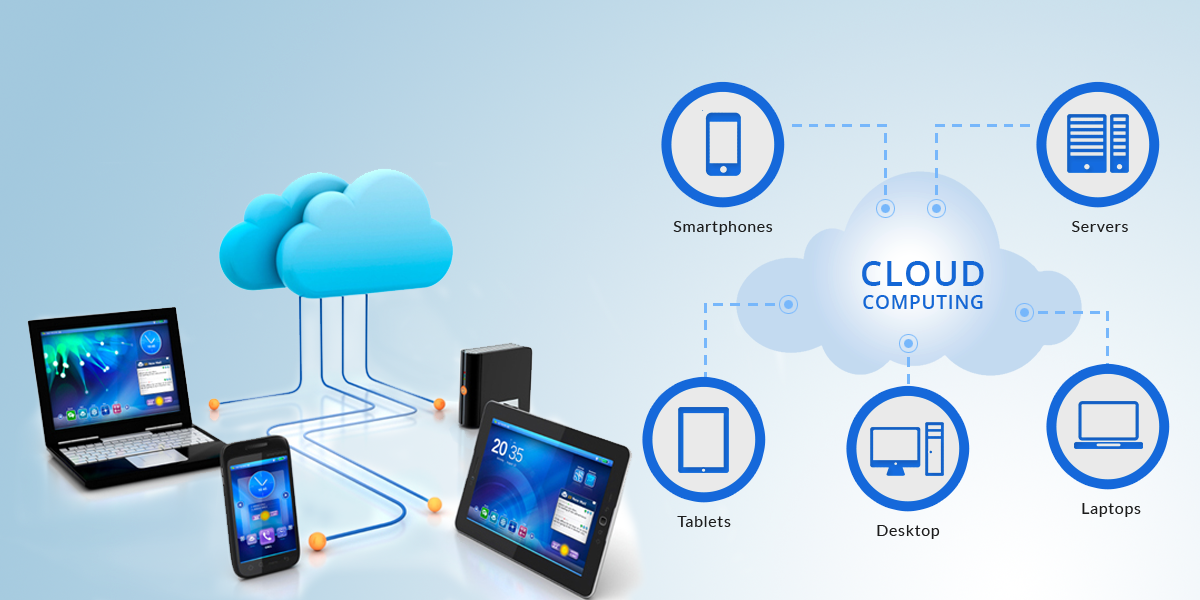Remote employment has transcended the status of a mere trend; it is now firmly entrenched as a lifestyle. This transformation is largely underpinned by the metamorphic influence of cloud computing. To gain a comprehensive understanding of the pivotal role of cloud technology in the triumph of remote work, it is imperative to delve more deeply into its profound impact on several critical facets: work efficiency, data security, collaboration, and overall productivity.
Enhanced Efficiency: Streamlining Work via Cloud Systems
Augmented Accessibility
The accessibility catalyzed by cloud computing is nothing short of revolutionary for remote workers. This emancipation from the physical confines of the office empowers them to access critical data and applications from diverse locations, unshackling their potential. The essence of remote work’s appeal lies in its ability to operate from the comforts of one’s domicile, a coffee emporium, or even a remote city. Cloud technology thus fortifies work without constrictions.
Mitigated Downtime
Downtime is the arch-nemesis of productivity. The obstructions and losses wrought by downtime can be a substantial hindrance to remote work. Cloud-based services act as a panacea by ensuring data continuity even in the presence of technical glitches or system failures. These services are architected with redundancy and reliability as their cornerstones, thereby minimizing the impact of disruptions. In essence, remote workers can bid adieu to protracted bouts of unproductivity as cloud systems promise seamless operation and data accessibility, even in less-than-ideal circumstances.
Scalable Resources
Remote work is inherently characterized by variability. The demands on computing resources are subject to fluctuations based on the nature of tasks at hand or evolving workloads. Cloud platforms bestow the priceless gift of resource scalability, allowing organizations to adapt their computing resources seamlessly. Whether confronted with sudden surges in demand or seasonal oscillations, businesses can tweak their resources without the need for substantial investments in physical infrastructure. Cloud computing embodies the quintessential feature of resource adaptability, ideal for the remote work landscape.
Fortified Security: Safeguarding Valuable Data in the Cloud
Data Encryption
In the realm of remote work, data security reigns supreme. Cloud services respond to this exigency with robust data encryption. This intricate process involves encoding data, rendering it virtually impervious to unauthorized access. This formidable encryption serves as a digital bulwark, guarding sensitive information from prying eyes. Whether safeguarding financial records, intellectual property, or customer data, encryption ensures the sanctity of confidential information.
Automated Backups
Data loss constitutes a harbinger of doom for businesses and remote workers alike. It can be precipitated by various unfortunate events, ranging from hardware debacles to inadvertent erasures. Cloud computing offers a safeguard against such calamities: automated backups. These backups generate data duplicates at regular intervals, preserving them securely in the cloud. In the event of data attrition, remote workers can rest assured, secure in their knowledge that their pivotal information is recoverable from these backup repositories. The automated backup mechanism in the cloud guarantees both data integrity and peace of mind, an indispensable facet of remote work’s triumph.
Centralized Oversight
The epicenter of data security in the cloud is centralized control. Administrators can oversee and manage security configurations from a singular, centralized locale. This ensures uniformity in the application of security protocols across the cloud environment. It facilitates swift responses to potential threats, conferring an additional layer of protection for valuable data. Centralized control constitutes the fulcrum for sustaining the security of cloud-based systems, thereby shielding data from vulnerabilities and breaches.
Facilitated Collaboration: Enhancing Teamwork in a Virtual Arena
Real-time Collaboration
One of the primary predicaments in remote work is the emulation of the seamless collaboration that typifies the conventional office setting. Cloud technology addresses this predicament through the infusion of real-time collaboration tools integrated into platforms such as Google Workspace and Microsoft 365. These tools enable remote teams to labor harmoniously, irrespective of their geographical dispersion.
Streamlined File Sharing
File sharing constitutes the lifeblood of collaboration, and the cloud streamlines this imperative process. Cloud-based storage renders file sharing eminently straightforward. These storage solutions furnish a centralized platform where teams can upload, access, and collaborate on files without the hassles intrinsic to conventional file transfers. This streamlined file-sharing system ensures that everyone has access to the latest document version, obliterating confusion and fostering enhanced productivity. The simplicity and efficiency of cloud-based file sharing act as catalysts, dismantling barriers to teamwork and breathing life into remote work.
Project Management Enhancement
Project management in a virtual milieu frequently proves to be a formidable challenge, yet the cloud offers a solution. Cloud-based project management tools like Asana and Trello are architected to streamline project collaboration. These tools furnish a digital workspace wherein teams can oversee projects, monitor progress, and achieve their milestones. Endowed with features such as task allocation, progress tracking, and deadline reminders, cloud-based project management tools ensure that everyone stays on the same page, even while toiling remotely. They empower remote teams to work with enhanced efficiency, thereby delivering results that either meet or surpass expectations.
Overall Productivity Augmentation: Enhancing Efficiency and Work Contentment
Economical Advantages
Cost efficiency constitutes a momentous boon. By eschewing the necessity for copious investments in hardware and perpetual maintenance, organizations can allocate their resources with alacrity. This cost-effective feature is particularly alluring to enterprises striving to optimize their fiscal disbursements. Funds that might otherwise have been directed toward maintaining physical servers and infrastructure are now redirected toward innovation and expansion. Cloud computing liberates capital, permitting organizations to funnel investments into areas that will propel their triumph in the fiercely competitive arena. It stands as a financial advantage that both remote workers and businesses cannot afford to disregard.
Uninterrupted Updates
Outdated software constitutes a formidable impediment to productivity. Data center resolves this conundrum by ensuring unobtrusive updates. Through automatic software updates, remote workers can rest assured that they consistently wield the latest, most efficient tools. These updates are implemented surreptitiously, with minimal disruption to the user’s workflow. This not only amplifies productivity but also guarantees the employment of secure and up-to-date software. Remote employees can singularly focus on their tasks, secure in the knowledge that their tools are honed for optimal performance and security.
Conclusion
The Future of Work: Cloud-Fueled Triumph
In the ever-evolving landscape of work, remote employment has not just made a mark; it has etched itself as an indelible feature. At its nucleus stands cloud computing, a potent force that streamlines work processes, reinforces data security, fosters collaboration, and elevates overall productivity. The adoption of cloud technology is no longer a discretionary matter; it is an imperative.


